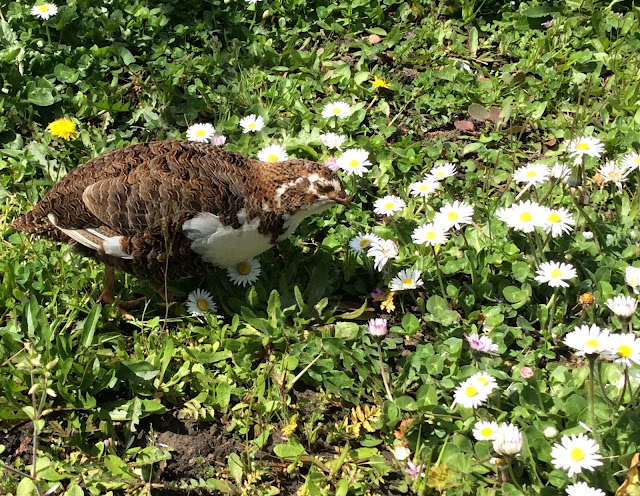A Spring picture - Spock enjoying the daisies!
We've all been struck down by end-of-winter colds and flu...unfortunately one after the other, not all together, so it seems as if the house has been filled with coughing and snuffling and the scent of hot lemon and honey for weeks and weeks...
The quails, meanwhile, have been full of the joys of Spring. So much so that we have been forced to cull some of our males, as they were attacking the females quite viciously. Most of our birds have paired off, but there were some boys who refused to settle down, preferring instead to attack the already-paired females, leading to nasty battles. Three of these boys were served up as a roast dinner...and today we sold two more. We sold them because the kids were quite distressed at eating the others - and decided that selling them would be easier. I'm not so sure. They went to a breeder, and I know they won't be living in a sunny open orchard, but in a cage. The fellow seemed nice enough, and had lots of different birds, but I am feeling surprisingly sad, imagining them missing their friends and family, and their free-ranging life. I'd rather eat them!
We'd been searching for eggs, but failing to find any, until we noticed Snowpea acting slightly oddly - attacking any bird who came near her and sneaking off after eating...so we followed her, and discovered eight eggs in a neat little nest, hidden in a clump of grass. So, our legendary mother-quail, who successfully raised all her chicks last year, is broody again! That was another reason for getting rid of some of the boys...
Snowpea's eggs, hidden in the grass.
Snowpea on her nest. The camouflage is pretty good!
Our little mother having a hurried dust bath before rushing back to her eggs.

















